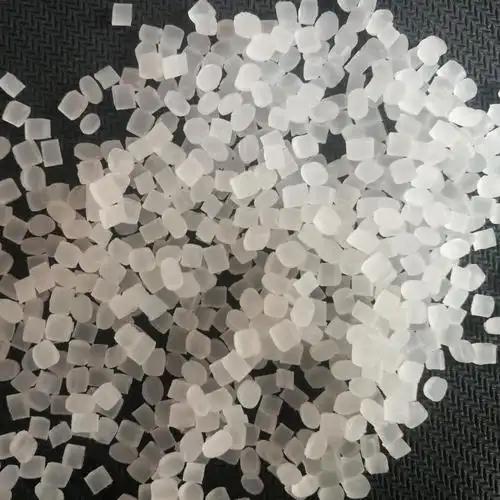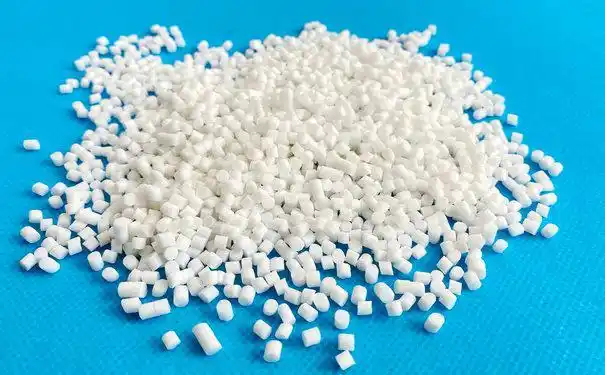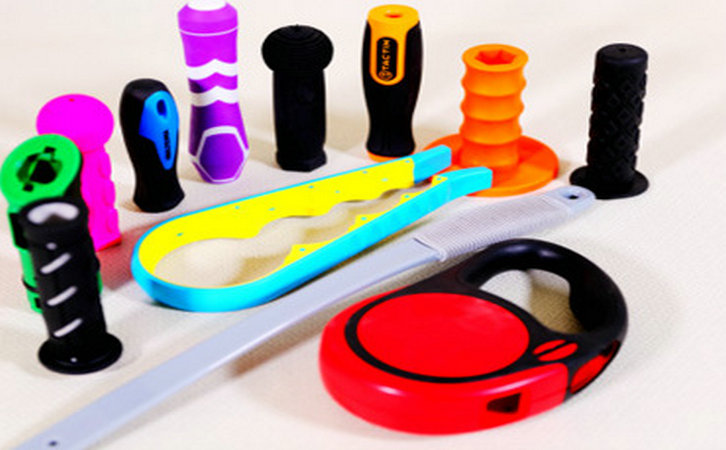As someone who’s been knee-deep in the materials industry for over a decade, working with manufacturers, designers, and engineers across sectors like automotive, medical, and consumer goods, I’ve seen firsthand how choosing the right material can make or break a project. One question that pops up repeatedly is: What’s the difference between TPE and TPU? Both Thermoplastic Elastomer (TPE) and Thermoplastic Polyurethane (TPU) are flexible, rubber-like materials that have become staples in industries ranging from 3D printing to medical devices. But despite their similarities, they’re not interchangeable. In this article, I’ll share my insights from years of working with these materials, breaking down their properties, applications, and key differences to help you decide which one fits your needs. Let’s dive in with a practical, real-world perspective.

Understanding TPE and TPU: The Basics
Before we get into the nitty-gritty, let’s clarify what these materials are. TPE, or Thermoplastic Elastomer, is a broad category of polymers that combine the flexibility of rubber with the processability of plastics. Think of it as a material that stretches like a rubber band but can be melted and reshaped like plastic. TPEs include various subtypes, like styrenic block copolymers (SBCs), thermoplastic polyolefins (TPOs), and, yes, TPU itself. TPEs have been around since the 1950s, making them a well-established choice for applications needing softness and elasticity.
TPU, or Thermoplastic Polyurethane, is a specific subset of TPE. It’s made through a chemical reaction between diisocyanates and polyols, resulting in a block copolymer with alternating hard and soft segments. Introduced in 1959 by BF Goodrich (now Lubrizol), TPU is known for its durability, abrasion resistance, and ability to withstand harsh conditions. I’ve worked with clients who swear by TPU for its toughness, but others prefer TPE for its softer, more pliable feel. Understanding their differences is key to picking the right one for your project.
Molecular Structure: The Root of the Differences
The core distinction between TPE and TPU lies in their molecular structure. TPEs are typically a blend of polymers, combining a soft rubber phase (like SBS or SEBS) with a rigid plastic phase (like polypropylene or polystyrene). This blend allows manufacturers to tweak properties like hardness or elasticity by adjusting the ratio of components or adding fillers like oils or talcum powder. For example, a shoe material TPE might consist of 30% TPE, 30% oil, 15% polystyrene, and 25% fillers to achieve the desired flexibility and cost-efficiency.
TPU, on the other hand, is a block copolymer with a more uniform structure. Its hard segments (diisocyanates) provide strength and rigidity, while its soft segments (polyether or polyester polyols) contribute flexibility. This structure gives TPU a more consistent performance across a range of conditions. I once worked with a medical device manufacturer who chose TPU for surgical tubing because its uniform structure ensured reliable elasticity under repeated sterilization, something a blended TPE struggled to match.
Hardness and Flexibility: A Key Differentiator
One of the most noticeable differences is in hardness and flexibility. TPEs cover a wide hardness range, from 0A to 100A on the Shore A scale, and can even be as soft as a plastic bag. This makes them ideal for applications requiring a gentle, cushioned feel, like grips on sports equipment or baby toys. TPU’s hardness typically ranges from 35A to 90A, with some grades reaching 50D to 80D on the Shore D scale, making it firmer and less pliable than the softest TPEs.

In a project for a consumer electronics company, we used TPE with a 20A hardness for a soft, ergonomic phone case that felt comfortable in hand. However, when the same client needed a more durable case for industrial tablets, we switched to TPU at 85A for its rigidity and scratch resistance. The choice came down to how much flexibility versus toughness was needed. TPE’s softer grades are great for tactile applications, but TPU’s firmer structure shines in demanding environments.
Mechanical Properties: Strength and Durability
When it comes to mechanical properties, TPU generally outperforms TPE. TPU boasts higher tensile strength (often 30–50 MPa compared to TPE’s 10–30 MPa), better abrasion resistance, and superior tear resistance. These qualities make TPU ideal for parts that endure constant wear, like conveyor belts or automotive seals. TPE, while still durable, is less resistant to abrasion and heavy loads, which can lead to faster wear in tough conditions.
I recall a case with an automotive supplier who initially used TPE for dashboard grips. After a year of heavy use, the grips showed signs of wear. Switching to TPU extended the lifespan of the parts by 50% due to its superior abrasion resistance. However, TPE’s higher tensile strength in some formulations (e.g., SEBS-based TPEs) makes it a better choice for applications needing stretch without breaking, like elastic bands.
Environmental Resistance: TPU’s Edge
Environmental resistance is another area where TPU often has the upper hand. TPU is highly resistant to oils, greases, chemicals, and UV radiation, making it suitable for outdoor or harsh environments. It also performs well across a wide temperature range, from -40°C to 80°C, without losing elasticity or becoming brittle. TPE, while UV-resistant and waterproof, is less robust against chemicals and extreme temperatures, with a typical range of 150–210°C before it becomes brittle or rigid.
A client in the agriculture industry switched from TPE to TPU for irrigation hoses after noticing TPE hoses degraded faster when exposed to fertilizers and sunlight. The TPU hoses lasted twice as long, saving them replacement costs. However, TPE’s environmental performance can be enhanced with additives like UV stabilizers, which I’ve seen used effectively in outdoor furniture applications.

Processing and Printability: Ease vs. Precision
Both TPE and TPU are compatible with injection molding, extrusion, and 3D printing, but their processing characteristics differ. TPE’s lower melt viscosity and processing temperatures (150–210°C) make it easier to mold into complex shapes, especially for high-volume production. This ease of processing often translates to lower manufacturing costs. However, TPE’s softness can lead to issues like shrinkage (1.2–3%) and stringing in 3D printing, making it trickier to achieve dimensional accuracy.
TPU, with a higher melting range (190–220°C, increasing with hardness), is more rigid and easier to print accurately, with a lower shrinkage rate (0.8–1.8%). Its firmness reduces clogging in 3D printers, which I’ve seen firsthand when helping a prototyping lab print TPU phone cases with clean, precise edges. However, TPU requires careful temperature control (e.g., 220–250°C extruder, 70°C print bed) and slower print speeds (20–30 mm/s) to avoid issues like warping.
In a project for a medical device company, we used TPE for soft, flexible catheter tubing because its lower processing temperature allowed faster production cycles. For more rigid components like connectors, TPU was the better choice due to its precision in molding. The trade-off is that TPU’s higher processing demands can increase energy costs.
Cost Considerations: Budget vs. Performance
Cost is a major factor in material selection. TPE is generally less expensive than TPU, making it attractive for budget-conscious projects. The lower cost comes from TPE’s simpler composition and use of additives like oils or fillers, which reduce raw material expenses. For example, a toy manufacturer I worked with chose TPE for its low cost and soft texture, saving 20% on material costs compared to TPU.
TPU, while pricier, justifies its cost in applications requiring durability and longevity. Its price can be 30–50% higher than TPE, depending on the grade and additives. A sports equipment company I advised opted for TPU in high-performance shoe soles because the added durability reduced customer returns by 15%, offsetting the higher upfront cost. Your choice depends on whether you prioritize initial savings or long-term performance.
Applications: Where Each Material Shines
Both TPE and TPU are used across industries, but their applications reflect their unique strengths:
TPE Applications:
Consumer Goods: Soft grips for pens, hockey sticks, or toothbrushes due to its gentle, elastic feel.
Medical Devices: Syringes, IV tubing, and wearable devices for its biocompatibility and softness.
Toys: Flexible, safe materials for baby toys or squishy figures, often with vibrant colors.
Seals and Gaskets: Waterproof seals in appliances or packaging due to its flexibility.
TPU Applications:
Automotive: Instrument panels, gear knobs, and airbag covers for abrasion and chemical resistance.
Footwear: Durable soles for athletic shoes, offering elasticity and wear resistance.
Industrial Components: Hoses, conveyor belts, and cable insulation for toughness in harsh conditions.
Electronics: Protective phone cases and smartwatch bands for durability and UV resistance.
I once helped a footwear brand choose TPU for their running shoe soles because the material’s abrasion resistance ensured the soles lasted through thousands of kilometers of use. For softer, more decorative shoe inserts, TPE was the go-to for its cost-effectiveness and pliability.

Comparison Table: TPE vs. TPU at a Glance
Here’s a quick reference to compare the key properties of TPE and TPU:
|
Property |
TPE |
TPU |
Best For |
|---|---|---|---|
|
Hardness Range |
0A–100A (very soft to firm) |
35A–90A, 50D–80D (firm to rigid) |
TPE: soft grips; TPU: durable parts |
|
Abrasion Resistance |
Moderate |
High |
TPU: high-wear applications |
|
Chemical Resistance |
Moderate (improved with additives) |
Excellent (oils, greases, solvents) |
TPU: harsh environments |
|
Processing Ease |
Easier, lower temperatures |
More precise, higher temperatures |
TPE: cost-efficient production |
3D Printing Considerations
In 3D printing, TPE and TPU are popular for flexible parts, but their printability differs. TPE’s softness (e.g., 85A) can cause issues like clogging or stringing in FDM printers, requiring careful tuning of retraction settings and slower print speeds. TPU, at 94–95A, is easier to print due to its rigidity, producing more accurate results with less shrinkage. For example, a prototyping lab I worked with printed TPU gaskets with 95A hardness on an Ender 3 Pro with minimal issues, while TPE required constant adjustments to avoid filament jams.
For SLS printing, TPE (e.g., PrimePart ST or Windform RL) is available as a powder, offering flexibility for complex geometries. TPU is more common in FDM filament form but can also be used in SLS. A key tip: use a Capricorn Bowden tube and a heated bed (70°C) for TPU to improve adhesion and reduce warping.
Environmental and Safety Aspects
Both TPE and TPU are recyclable, as they can be melted and reshaped without losing structural integrity. This makes them more sustainable than thermoset rubbers. They’re also non-toxic and biocompatible, lacking proteins that cause allergic reactions, which is why they’re widely used in medical applications like catheters or wearable devices.
However, TPU can release noxious fumes when printed at high temperatures, so adequate ventilation is crucial. TPE is generally safer to print in enclosed spaces like a living room, as I advised a hobbyist who was printing TPE toys on a Prusa Mini. Always check the material’s safety data sheet (SDS) and ensure proper ventilation, especially for TPU.

Choosing Between TPE and TPU: Practical Tips
Based on my experience, here’s how to decide which material is right for your project:
Assess Application Needs: If you need a soft, flexible part (e.g., grips or toys), TPE’s lower hardness and cost make it a great choice. For durable, high-wear parts (e.g., shoe soles or industrial seals), TPU’s toughness is worth the extra cost.
Consider Environmental Conditions: For outdoor or chemical-heavy applications, TPU’s superior resistance to UV, oils, and temperature extremes is a must. TPE works well for indoor or less demanding environments.
Evaluate Processing Capabilities: If your production prioritizes speed and cost, TPE’s easier processing is a plus. For precision and durability, TPU’s firmer structure is better, especially in 3D printing or complex molding.
Budget Constraints: TPE is more budget-friendly, but TPU’s longevity can save money in the long run. A client of mine saved 30% on replacements by choosing TPU for high-wear conveyor belts.
Test and Prototype: Always test the material on a small scale. I’ve seen companies avoid costly mistakes by prototyping with both TPE and TPU to compare performance before committing.
Real-World Example: A Tale of Two Projects
A few years ago, I worked with two clients with different needs. The first, a toy manufacturer, needed a soft, flexible material for a line of squishy animal figures. We chose TPE at 20A hardness for its soft texture and low cost, allowing them to produce thousands of units affordably. The toys were a hit, with a 10% increase in sales due to their appealing tactile feel.
The second client, an automotive parts supplier, needed durable seals for engine components exposed to oil and heat. We opted for TPU at 85A hardness, which withstood the harsh conditions and reduced maintenance costs by 25% compared to their previous TPE seals. These experiences highlight how application-specific needs drive material choice.
Wrapping Up: Making the Right Choice
Navigating the differences between TPE and TPU can feel like a maze, but it all boils down to your project’s priorities. TPE’s softness, affordability, and ease of processing make it a go-to for consumer goods, medical devices, and flexible prototypes. TPU’s durability, abrasion resistance, and environmental toughness make it the choice for demanding applications like automotive parts, footwear, and industrial components. My years in the industry have taught me that there’s no one-size-fits-all—success lies in matching the material to the task.
Before deciding, consider prototyping with both materials, checking your production capabilities, and weighing cost against performance. Whether you’re designing a soft toy or a rugged industrial part, understanding these differences will help you make a choice that balances quality, cost, and functionality.

Related Questions and Answers
Q: Is TPU always better than TPE for 3D printing?
A: Not always. TPU is easier to print due to its rigidity and lower shrinkage (0.8–1.8%), making it ideal for precise parts like phone cases. TPE’s softness (0A–100A) is great for flexible prototypes but can cause clogging. A client of mine had better results with TPU on an FDM printer for gaskets, while TPE worked for softer SLS-printed models.
Q: Can TPE and TPU be used interchangeably in medical applications?
A: They can in some cases, like tubing or wearable devices, due to their biocompatibility. However, TPU’s superior chemical resistance makes it better for sterilized equipment. I advised a medical device company to use TPU for catheters exposed to harsh cleaners, while TPE was fine for disposable syringes.
Q: Why is TPU more expensive than TPE?
A: TPU’s higher cost (30–50% more) comes from its complex chemical structure and superior properties like abrasion and chemical resistance. TPE’s simpler blend and use of fillers like oils reduce costs. A toy manufacturer I worked with saved 20% using TPE for budget-friendly products.
Q: How do I choose between TPE and TPU for outdoor applications?
A: TPU is better for outdoor use due to its higher UV and temperature resistance (up to 80°C). TPE can work with UV stabilizers but degrades faster in harsh conditions. An agriculture client switched to TPU hoses for better durability in sunlight and chemicals.
Q: Are TPE and TPU safe for consumer products?
A: Yes, both are non-toxic and free of allergenic proteins, making them safe for toys, grips, and medical devices. However, ensure proper ventilation when 3D printing TPU to avoid fumes. I’ve seen TPE used safely in baby toys and TPU in durable phone cases.





